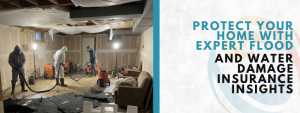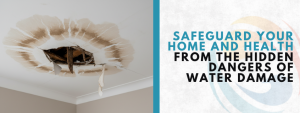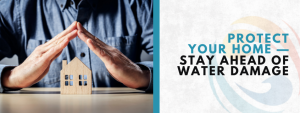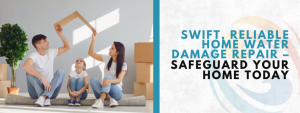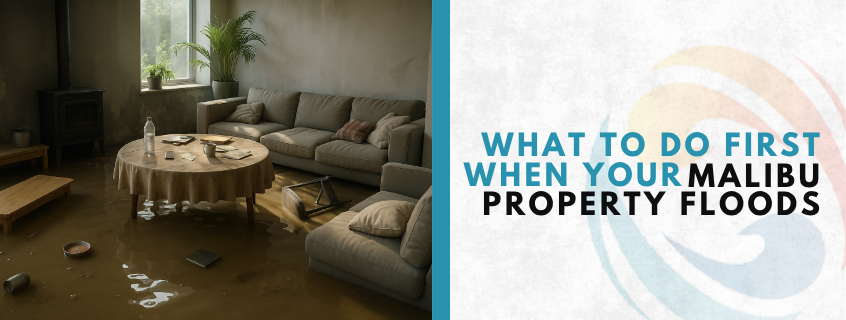
It was just another sunny morning in Malibu, but suddenly—out of nowhere—dark clouds rolled in, the skies cracked open, and rain came down like a waterfall. Within hours, your peaceful home turned into a flooded mess. Floors soaked. Furniture ruined. Panic rising. You’re probably thinking, “Where do I even start?”
Let’s walk through it—step by step—just like a friend would. This isn’t just a dry checklist. This is real talk, clear guidance, and life-saving information about what to do after a flood at home. So, take a deep breath. We’ve got you covered.
Your safety comes first. If your home floods, don’t rush back in. Water hides dangers. Broken glass, live wires, sewage—all that stuff can hurt you or make you sick. So before anything else, step outside, take a minute, and make sure it’s truly safe to go back in.
Check Your Safety Before Anything Else
Knowing what to do after a flood at home starts with staying safe. Here’s what you need to do immediately:
- Turn off the power: If water levels reach your outlets or electric panel, don’t touch anything. Call a professional.
- Watch for gas leaks: If you smell rotten eggs or hear a hissing sound, leave right away and call the gas company.
- Wear protective gear: That means rubber boots, gloves, and a face mask. Floodwaters carry bacteria and sharp debris.
- Keep children and pets away: Flooded spaces aren’t safe for little feet or furry friends.
⚠️ Never walk through moving water—even six inches can knock you off your feet.
Contact the Right People Immediately
Once you’re out of danger, your next steps are about reaching out to the right folks. Timing matters here. What to do after a flood at home isn’t just about drying floors—it’s also about making calls quickly.
Here’s who to call:
- Emergency Services (911) if anyone is hurt.
- Your insurance company to start the claims process.
- A trusted water damage restoration service, like this expert team in Malibu, who can arrive fast and start the cleanup right.
Don’t wait days to call for help. The longer the water sits, the worse the damage becomes. Mold starts growing in just 24–48 hours.
Document the Damage for Insurance
Now’s the time to channel your inner detective. Grab your phone and take lots of photos and videos. Think of it like gathering evidence. What to do after a flood at home also includes making sure you have proper proof for insurance.
Include:
- All affected rooms
- Damaged appliances and furniture
- Soaked carpets and flooring
- Waterlines on walls
- Outdoor damage (like fences or sheds)
📝 Tip: Take wide shots and close-ups. Turn on timestamps if possible. Write short notes for each room so nothing gets missed.
Remove What You Can (If It’s Safe)
If the pros haven’t arrived yet and it’s safe to go in, you can start removing lightweight items that are soaked but salvageable.
- Pick up rugs and cushions
- Move books and personal items to dry ground
- Open drawers and cabinets (wear gloves)
- Remove valuables and keepsakes to a clean, dry spot
But don’t try to move large furniture or flooring. It’s too risky without proper tools or training. And remember, waterlogged wood and drywall can be dangerous if they collapse.
Start Drying Out the Space
One of the most essential steps in what to do after a flood at home is drying everything out. Water soaks deep—walls, floors, insulation—it’s not just about what you can see.
Here’s how to start:
- Open all doors and windows
- Use fans if you have power
- Rent or borrow a dehumidifier
- Blot surfaces with towels (not push—just dab)
If power’s out or water levels are high, wait for professional help. If you need urgent restoration services, this 24/7 water damage team can be on-site quickly.
Know What’s Salvageable vs. What’s Not
Some things can be cleaned and kept. Others need to go—for your health and safety. Here’s a simple table to help:
| Item Type | Keep or Discard? | Reason |
| Solid wood furniture | Keep (if not warped) | Can often be dried and cleaned |
| Upholstered furniture | Discard | Soaks up bacteria, mold, and odors |
| Mattresses | Discard | Impossible to fully dry or sanitize |
| Appliances | Check with a technician | Internal damage may not be visible |
| Toys and stuffed animals | Discard | Hard to fully sanitize |
| Documents and photos | Keep (try drying) | Place between paper towels, air dry slowly |
Knowing what to do after a flood at home also means making hard choices about what stays and what goes. It’s tough, but necessary.
Watch Out for Mold Growth
Mold loves moisture. It spreads fast and can make you sick, especially if you have asthma or allergies. That’s why part of what to do after a flood at home is catching mold early.
What to look for:
- Musty smells
- Fuzzy spots in corners
- Discoloration on walls or ceilings
- Sneezing or coughing more than usual
If you notice any of these signs, call a mold remediation specialist. Mold isn’t something you can spray away—it needs expert treatment.
📌 Reminder: Mold starts growing within 24–48 hours. Don’t wait!
Check Your Home’s Structure
Once your home is drying out, it’s time to look closer. What to do after a flood at home includes checking for hidden damage:
- Are your walls bowed or cracked?
- Does the floor feel soft or uneven?
- Are doors and windows sticking?
These signs mean water may have weakened your home’s structure. It’s a good idea to have a contractor inspect it before you make any repairs.
Clean and Sanitize Everything
Water from floods is rarely clean. Even if it looks clear, it can carry bacteria, sewage, or chemicals. Cleaning is a big part of what to do after a flood at home.
Here’s how to do it right:
- Wear gloves and a mask.
- Mix bleach with water (1 cup bleach per 5 gallons of water).
- Scrub all hard surfaces—walls, floors, counters.
- Disinfect doorknobs, light switches, and tools.
Never mix bleach with ammonia. That creates toxic fumes.
Know When to Rebuild (and When to Wait)
It’s tempting to jump into repairs right away, but wait until everything is 100% dry. If you rebuild too soon, you trap moisture inside your walls, which leads to more damage later.
Use this checklist:
- The space smells neutral (no musty odor)
- No visible moisture or stains
- Humidity levels are below 50%
- Mold inspection is complete
Once these boxes are checked, you can repaint, lay flooring, and replace what you lost. Talk to your insurance rep before hiring contractors.
Keep Future Floods from Happening
Now that you’ve lived through a flood, you’ll want to prevent it from happening again. Prevention is part of what to do after a flood at home—it’s the final step that protects your peace of mind.
Try these steps:
- Elevate appliances and electrical systems
- Install a sump pump with battery backup
- Use water-resistant flooring in flood-prone areas
- Add landscaping that redirects water away from your home
- Keep gutters and drains clear of leaves and debris
💡 Consider getting a professional water damage inspection from a top-rated Malibu company to pinpoint your home’s weak spots.
Quick Reference: Your Flood Response Checklist
Here’s a simple alphabetical list you can print or save:
A – Assess safety and exit if needed
B – Begin calling your insurance and restoration team
C – Capture photos and videos of all damage
D – Dry what you can safely reach
E – Eliminate items that can’t be saved
F – Focus on ventilation and airflow
G – Guard against mold with early checks
H – Hire licensed professionals for cleanup
I – Inspect your home for structural issues
J – Just wait before rebuilding—ensure it’s dry
K – Keep flood prevention plans in place
Final Thoughts
Flooding is overwhelming. But you’re not alone—and you don’t have to figure out everything by yourself. By understanding what to do after a flood at home, you’ll protect your health, save your property, and restore your peace of mind faster.
Just remember: take it one step at a time. From calling for help to rebuilding better than before, every action matters. And with trusted experts just a call away, your road to recovery starts sooner than you think.
If your Malibu home ever floods, don’t panic. Take action. Protect your family. And trust the pros who know exactly how to help.
Frequently Asked Questions About Home Flood Recovery in Malibu
What should I do first if my home floods?
Your safety is the priority. If water has entered your home, make sure everyone gets to a safe place. Avoid touching electrical outlets or wading into deep water. Call emergency services if needed. Once secure, contact your insurance company and a trusted water damage restoration team immediately to begin the recovery process.
Can I stay in my house after it floods?
It depends on how severe the flooding is. If there’s standing water, mold, or structural damage, it’s best to stay elsewhere until professionals confirm your home is safe. Breathing in mold or living in damp conditions can be harmful to your health.
How soon should I start cleaning up after a flood?
As soon as it’s safe and you’ve documented the damage for insurance, you should begin cleanup. The first 24–48 hours are critical to preventing mold. If possible, ventilate the home, remove wet belongings, and contact restoration specialists right away.
What should I throw away after a flood?
Items that are porous and soaked—like carpets, mattresses, upholstered furniture, and stuffed toys—should be thrown away. These can harbor bacteria and mold even after drying. Hard surfaces and solid wood items can often be cleaned and saved.
Will my insurance cover the flood damage?
It depends on your policy. Standard homeowner’s insurance usually doesn’t cover flood damage unless you have a separate flood insurance policy. Call your insurance provider quickly to review your coverage and begin the claims process with the right documentation.


